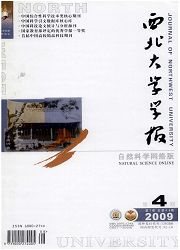

 中文摘要:
中文摘要:
目的借助于MINITAB统计学软件,采用Plackett—Burman设计和响应面优化法对基因工程茵Escherichia coli BL21发酵生产类人胶原蛋白的原始培养基进行优化研究。方法首先利用Hacker-Burman设计筛选出对类人胶原蛋白产量影响显著的3个因素,即葡萄糖甘油1:4混合碳源、酵母粉和硫酸铵。在此基础上用最陡爬坡实验逼近最大响应区域,找到后续实验的中心点。再利用Box—Behnken实验设计及响应面分析法进行回归分析,确定主要影响因素的最佳水平。结果优化后的3种主要影响成分为葡萄糖甘油1:4,混合碳源12.24g/L,硫酸铵7.12g/L,酵母粉5.53g/L。结论方程拟合良好,优化后的培养基发酵产量经摇瓶和发酵罐验证,产量分别为5.91g/L和6.12g/L,较优化前分别提高了306%和296%。
 英文摘要:
英文摘要:
Aim To improve human-like collagen production by optimizing its culture medium. Methods The Plackett-Burman design (PBD) was used to evaluate the effects of eight composites on the production of collagen. The steepest ascent experiment was adopted to determine the optimal region of the medium composition. The optimum composition of the fermentation medium for maximum collagen yield, as determined on the basis of a three- level three-factor Box-Behnken design, was obtained by response surface methodology (RSM). Results The optimal concentrations of the variables are glucose and glycerol mixed carbon resource 12. 24 g/L, ammonium sulfate 7. 12 g/L and yeast powder 5.53 g/Lo The predicted collagen yield was 6. 05 g/L. Conclusion The high correlation between the predicted and observed values showed the validity of the model. Collagen yield was increased to 5.91 g/L and 6. 12 g/L respectively in Erlenmeyer flasks and 12. 8 L fermenter.
 同期刊论文项目
同期刊论文项目
 同项目期刊论文
同项目期刊论文
 A microcalorimetric method for studying the biological effects of Mg 2+ ion on recombinant Escherich
A microcalorimetric method for studying the biological effects of Mg 2+ ion on recombinant Escherich Preparation of fibroin/recombinant human-like collagen scaffold to promote fibroblasts compatibility
Preparation of fibroin/recombinant human-like collagen scaffold to promote fibroblasts compatibility Optimization of Fermentation Process for Human-like Collagen Production of Recombinant Escherichia c
Optimization of Fermentation Process for Human-like Collagen Production of Recombinant Escherichia c Oxygen transfer rate control in the production of human-like collagen by recombinant Escherichia coi
Oxygen transfer rate control in the production of human-like collagen by recombinant Escherichia coi Effects of acetic acid and its assimilation in fed-batch cultures of recombinant Escherichia coli co
Effects of acetic acid and its assimilation in fed-batch cultures of recombinant Escherichia coli co Erratum: Production of biomass and recombinant human-like collagen in Escherichia coli processes wit
Erratum: Production of biomass and recombinant human-like collagen in Escherichia coli processes wit 期刊信息
期刊信息
